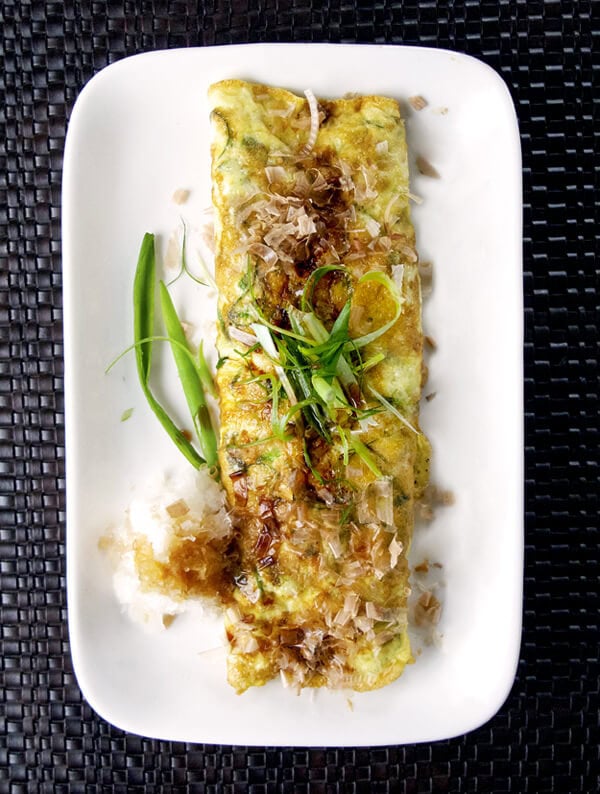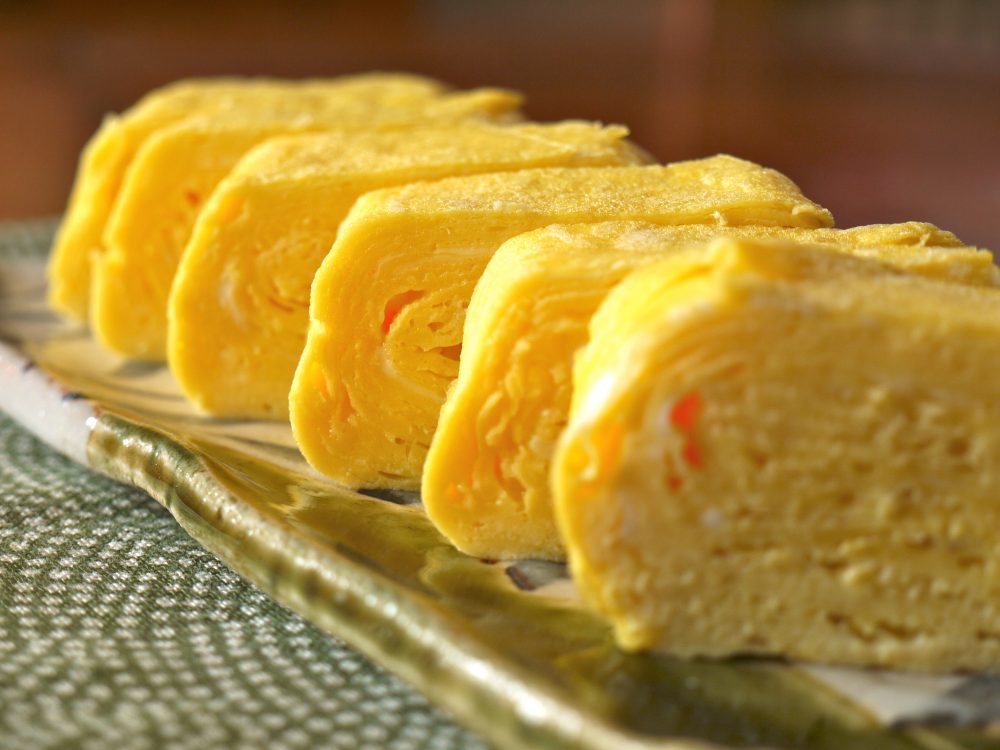Tamagoyaki
卵焼き
Tamagoyaki is a type of Japanese omelette made by rolling together several layers of fried beaten eggs. It is often prepared in a rectangular omelette pan called a makiyakinabe or tamagoyaki. The word "tamago" means egg in Japanese, and the word "yaki" means to be cooked over direct heat. Chicken and chicken eggs were first consumed in Japan in the early Edo period (1603–1867), when the ban on eating chicken meat and eggs was lifted. The tamagoyaki first appeared as a food for the chōnin (townspeople) of the Edo period. At that time, it was called "tamago fuwafuwa" and was made by boiling soup broth made by leaching umami ingredients from konbu (edible kelp) and katsuobushi (dried bonito flakes), adding beaten egg, and steaming. Ōgiya (扇屋), a famous tamagoyaki shop that opened in Ōji in 1648 and is still in business today, appears in Utagawa Hiroshige's ukiyo-e "Edo kōmei kaitei zukushi" (江戸高名会亭尽) and in the rakugo story performance "Ōji no kitsune" (王子の狐). Ōji and Asukayama, famous for cherry blossoms, were lined with ryōtei (traditional Japanese restaurants) and teahouses, and Ōgiya was one of them. Tamagoyaki became popular in Japan in the 1950s, when the government encouraged parents to feed their children more protein, and farmers started raising more chickens. By the 1960s, tamagoyaki was so popular with Japanese children that there was a common saying within Japan that tamagoyaki was one of three things most loved by Japanese children, along with the Giants (a Japanese baseball team), and Taiho (sumo wrestler).
Source: Wikipedia
Recipes
1 egg tamagoyaki (Japanese omelette) | JustBento
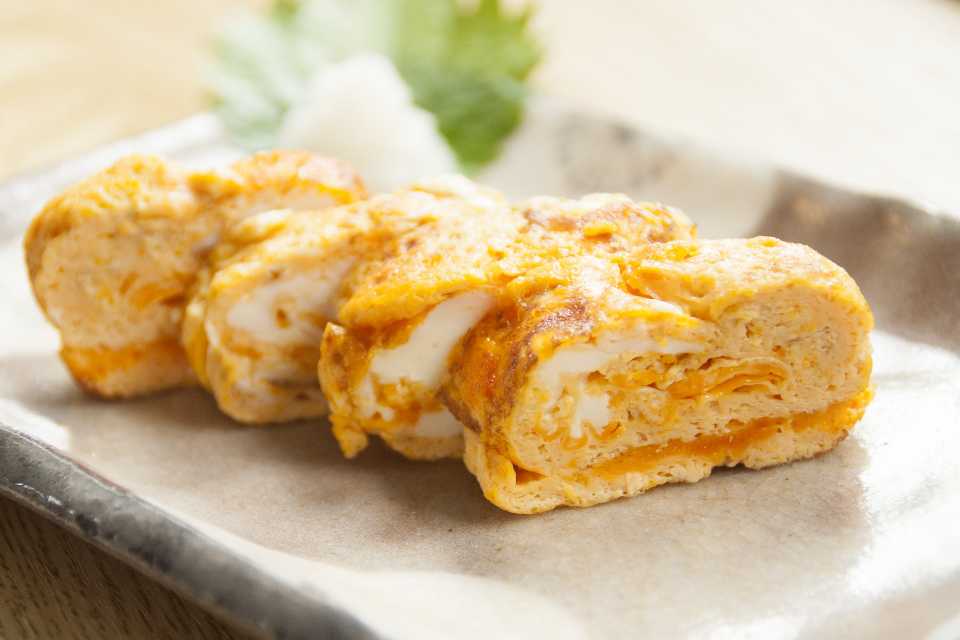

:max_bytes(150000):strip_icc()/japanese-tamagoyaki-recipe-2031022-hero-01-0a1d1bd24bf94e78873661be4b5c2b13.jpg)

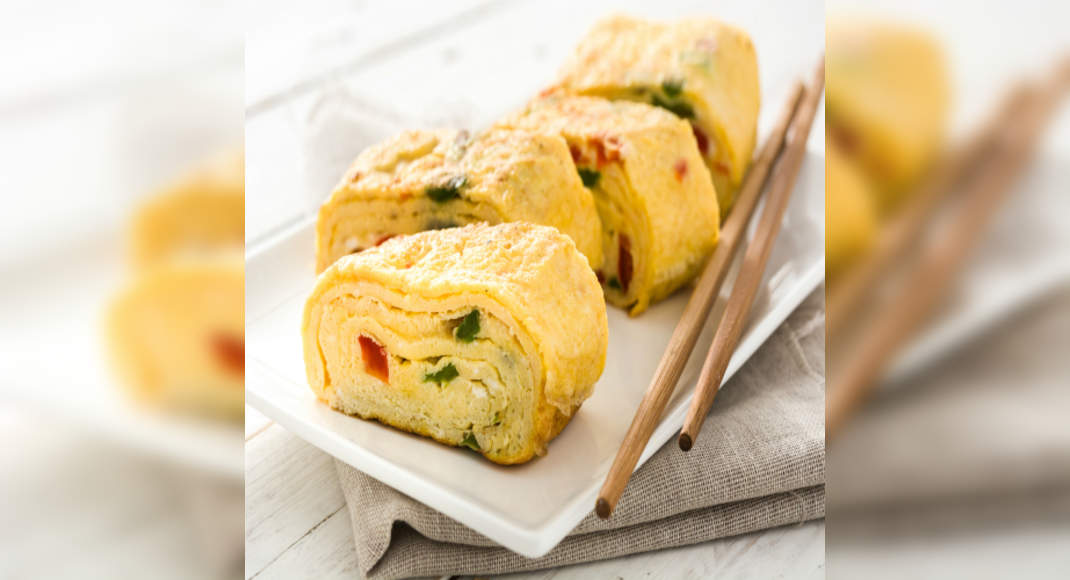

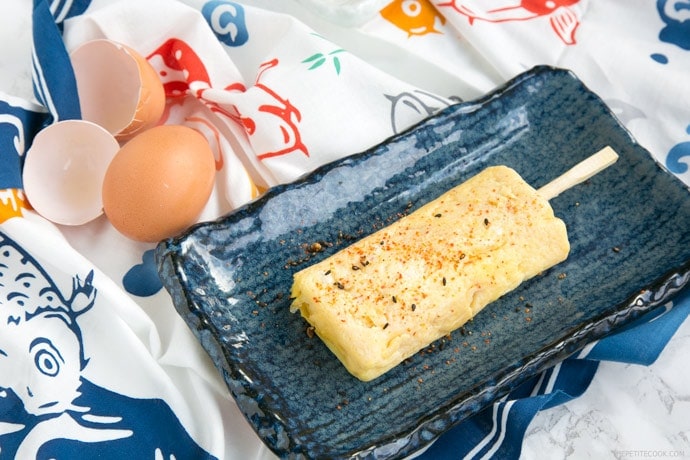

:max_bytes(150000):strip_icc()/__opt__aboutcom__coeus__resources__content_migration__serious_eats__seriouseats.com__2019__08__20190611-tamagoyaki-vicky-wasik-4-955f4e9a6c8249358ee8f9e975edd8fc.jpg)

